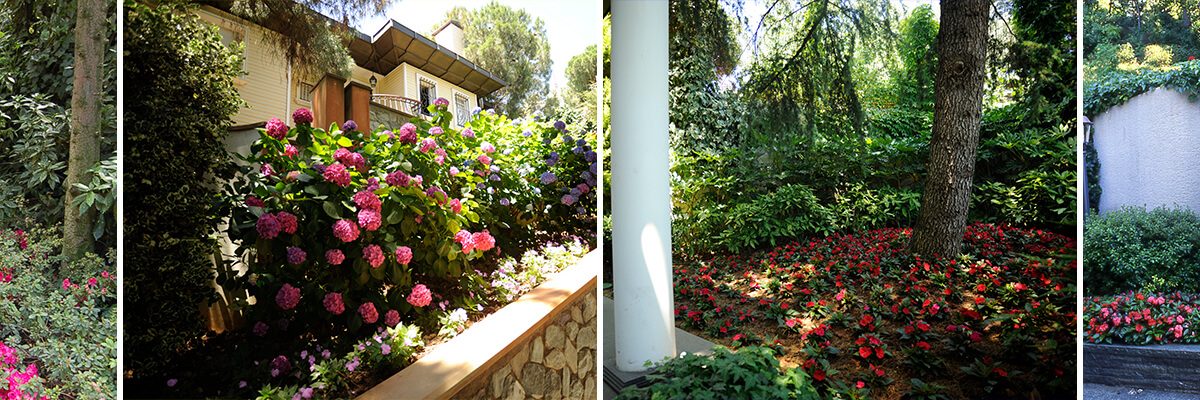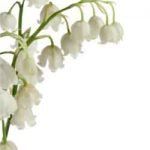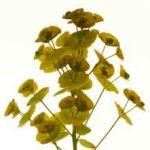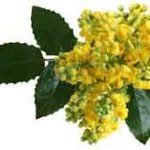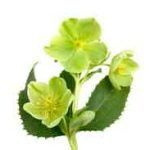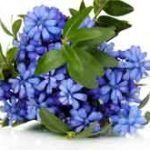Shade-resistant plants often have large leaves, because they want to make comfortable photosynthesis. Colorful flowers are often not found in these plants. Equipped with shade-resistant plants during landscaping, the space gives the appearance of green water gushing from a dark corner. Small gardens between buildings in the city can be overshadowed. Some gardens are constantly in the shade, while others may be an area where the sun passes at a certain time of the day. The plants that we will use in such places should be happy on the spot and should be able to tolerate the sunless environment easily. Shade-resistant plants are as follows.
Shade resistant plants and their definitions
Bergenia abendglut: It is resistant to winter season and this plant begins to show up in spring with hairy leaves, sapy appearance, large flowers, thick flower stems. Its leaves cover the shaded ground almost completely. Pink, purple, blue, white flowers with looks that draw attention. It grows best in the garden, this plant loves water. If you plan to grow in pots, you should make sure that the pot is as big as possible. In places where the winter season is strong, the leaves should be pruned, provided that they are not shorter than 20 cm. You should cut the faded flowers quickly.
Polystichum setiferum: It is among the ideal plants for shade. Indispensable for nooks with curly and curved leaves. Since it is green, it finds its place in the garden in winter. From autumn to early spring, it becomes lighter green, then dark bright green. It grows in well-drained moist soils, but can tolerate occasional irrigation in dry weather. Too much sun causes the leaves to turn yellow.
Mahonia aquifolium: It is an ever-green shrub-shaped plant with bright yellow flowers that bloom in spring. There are blue black nuts that ripen in autumn. It is a good ground cover in dry and shaded areas. It is a spreading plant resistant to open areas. It is also resistant to full shade. It loves acidic and well-drained soils, disturbed by strong wind and full sunlight. Although the taste of the fruit of the plant is sour, the jam is simply amazing.
Liriope muscari: It is an ever-green plant. It is a good ground cover among shade resistant plants. From early autumn, it produces small purple flowers on long stalks among elegant leaves. The leaves are always green. It grows well under tree, in less watered soils or in pots. In calcareous soils it gets sick from iron deficiency. If used in inclined and unstoppable places, it gives a very beautiful image with its flower.
Euphorbia amygdaloides: Euphorbia amygdaloides: It is an excellent plant that grows well both in the sun and in dry shadows. It is a dark green, slightly hairy leafy, textured covering plant. It has a long life. But if he doesn’t like his place, he’s unhappy. It has white flowers and reaches 1.5 m in length. It is a slow growing, poisonous plant; May cause allergic skin and eye conditions. It is drought tolerant. The flowers of this plant that require almost zero maintenance are also used as cut flowers. You can also grow in pots.
Helleborus argutifolius: Helleborus argutifolius: It is a very fast growing plant capable of retaining water. At the beginning of the year, green flowers emerge from the leaves in the form of bowls. It prefers well-drained sandy soil. It is drought tolerant. Toxic and may cause allergic reactions. You want the soil to be constantly moist, so you should not let the soil dry between irrigation.
Anemone: Enjoys to live in well-drained soils and wind-resistant sections. It can live on any garden soil but does not like very watery soils. It is a perennial plant; it has an elegant appearance with its simple looking white flower. Remember, snails and caterpillars love this plant.
Convallaria majalis: The lily of the valley, which loves damp and shadowy places, fills the air with beautiful scents in spring. Delicate flowers, elegant leaves with a simple appearance. It is a perennial plant, in spring the leaves grow as dark green up to 15-20 cm. Plant roots proliferate and expand by covering the area. They can live in complete shade. Its base is sensitive to grass. It is an ideal plant for tree bottoms.
Aucuba japonica: Slow-growing, invasive, perennial, among all green and shade-resistant plants. Gives flowers in spring. Prefers soils rich in organic matter. Variegated laurel pruning is an ideal plant for city gardens. It doesn’t bother with plenty of light, but it doesn’t want sunlight. With its sparkling green leaves and bright red berries, it can give life to even the most shadowy places




